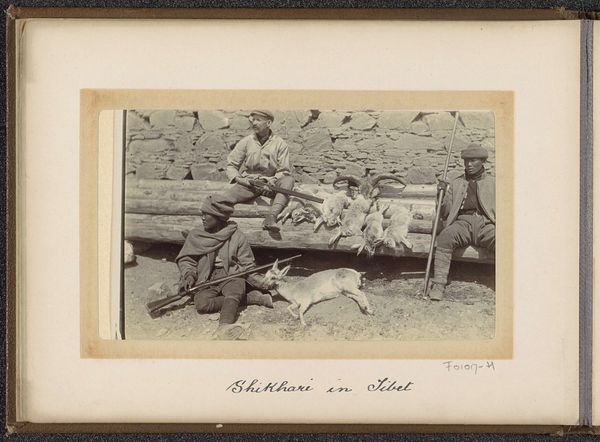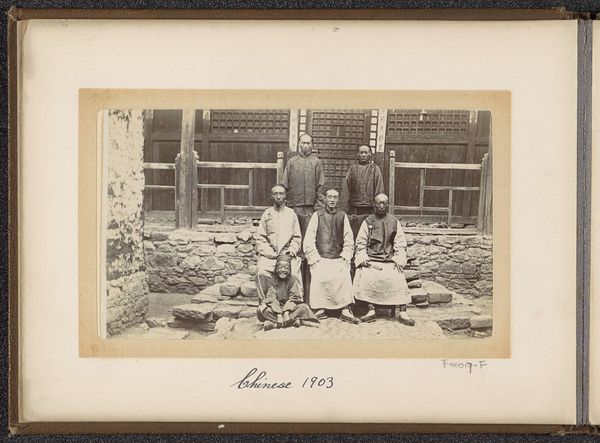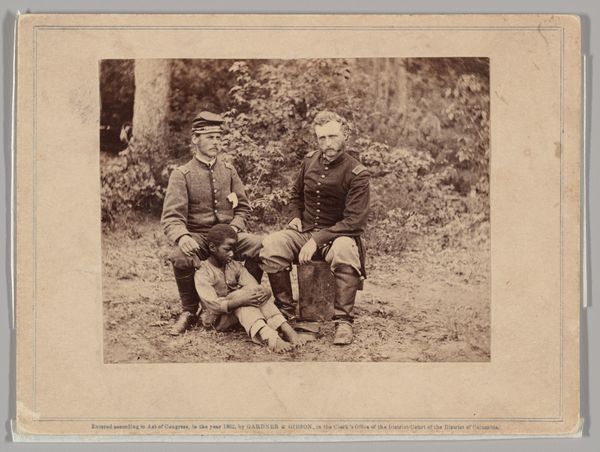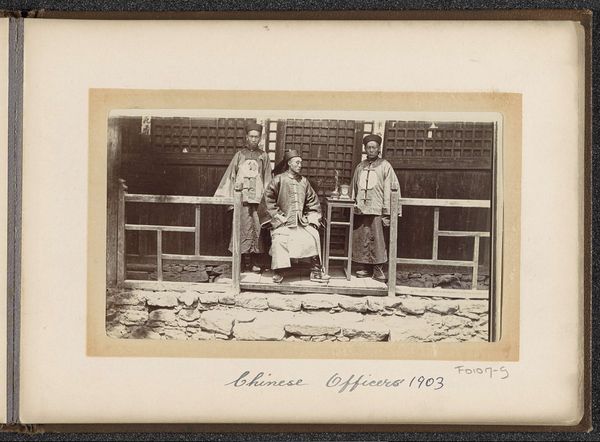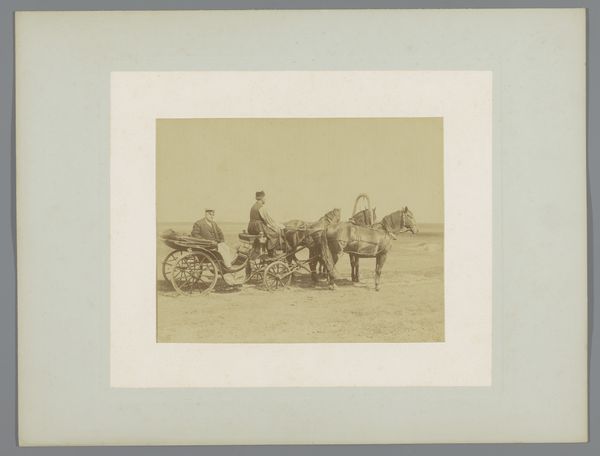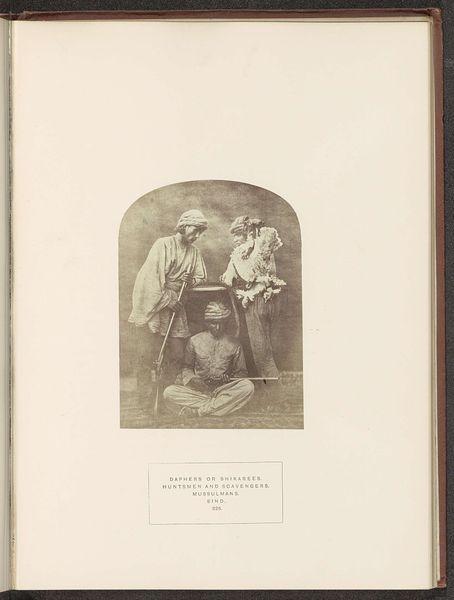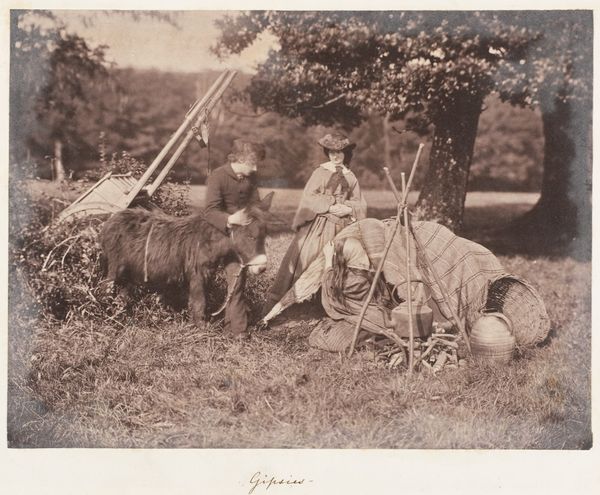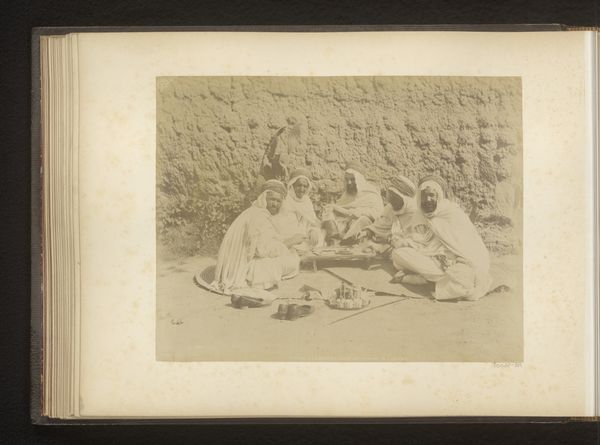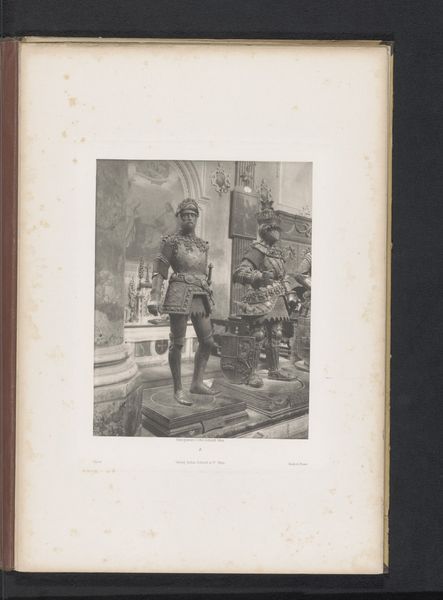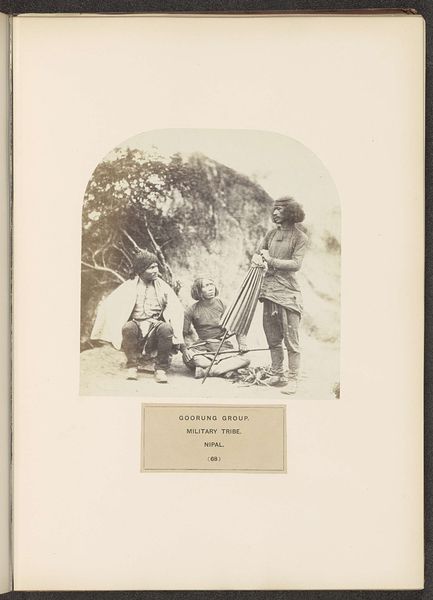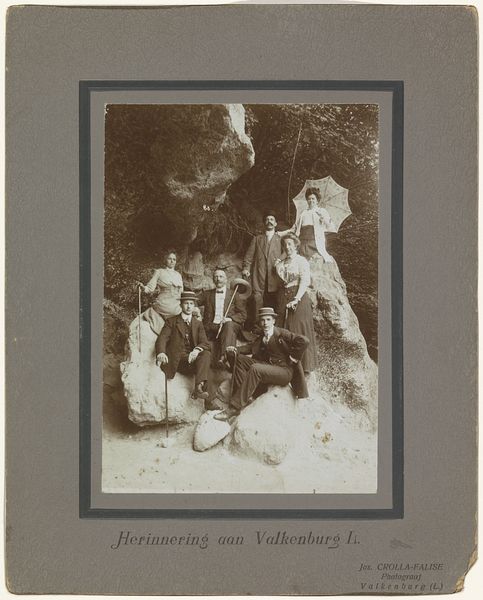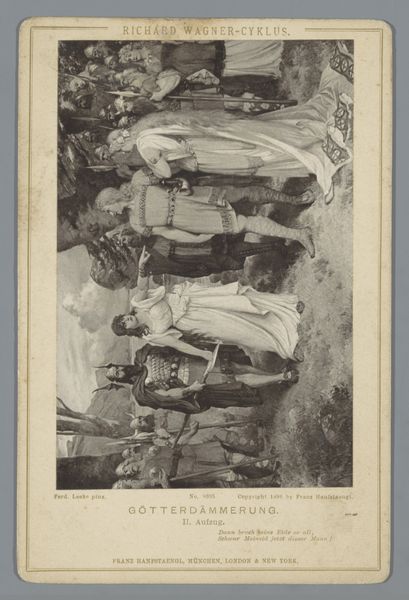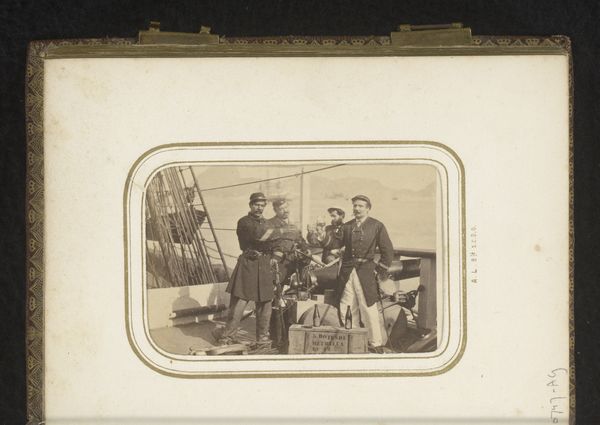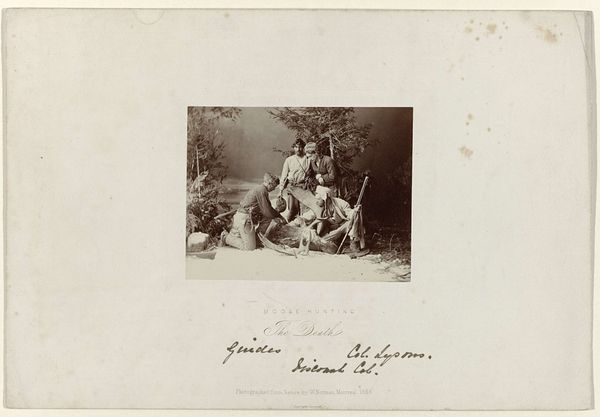
Shikhari (jachtgids), twee Engelsen waaronder vermoedelijk fotograaf sergeant Dalton, en jachtbuit in Tibet 1903 - 1906
0:00
0:00
photography
#
photography
#
photojournalism
#
genre-painting
Dimensions: height 80 mm, width 137 mm
Copyright: Rijks Museum: Open Domain
Curator: It’s an image of stillness, really. Even amidst what we know was a violent act. The photograph, titled "Shikhari (jachtgids), twee Engelsen waaronder vermoedelijk fotograaf sergeant Dalton, en jachtbuit in Tibet", was taken between 1903 and 1906. Editor: A hunt, then. What immediately strikes me is the composition—the arrangement of the three figures flanking the slain animal creates an unsettling symmetry. The positioning invites questions about power and domination over nature and native populations. Curator: D.T. Dalton, thought to be the photographer, captured more than just a hunting scene; this photograph implicates British colonial practices, a genre painting that freezes a moment of conquest, reflecting an epoch when adventurers turned photographers documented their dominion across foreign lands. Editor: Note the rifle placement – pointed downwards, almost mirroring the defeated pose of the animal. It adds a layered complexity, pointing beyond the simple documentation towards the latent violence underlying imperial enterprise. Curator: Quite right. And the framing itself, set within what appears to be a formal album page, elevates what might otherwise be seen as documentation of a hunting trip to an emblem of status and cultural narrative, one where the exotic becomes a token of authority. The image enters a genre painting mode precisely via such constructed artifice. Editor: Thinking structurally, that sharp tonal contrast between the crisp light hitting the figures and the shadowed space beneath the platform also creates an interesting sense of depth. This is a stage, and these are the players enacting their roles, forever paused in the lens’s regard. Curator: The work provides an unflinching portrayal of a historical moment imbued with complex meanings about control, identity, and the imperial gaze. A fascinating collision between social practice and self-fashioned grandiosity. Editor: Yes, there’s a stillness, and yet the tension of empire silently reverberates in this frozen instant. Something deeply disquieting persists.
Comments
No comments
Be the first to comment and join the conversation on the ultimate creative platform.
